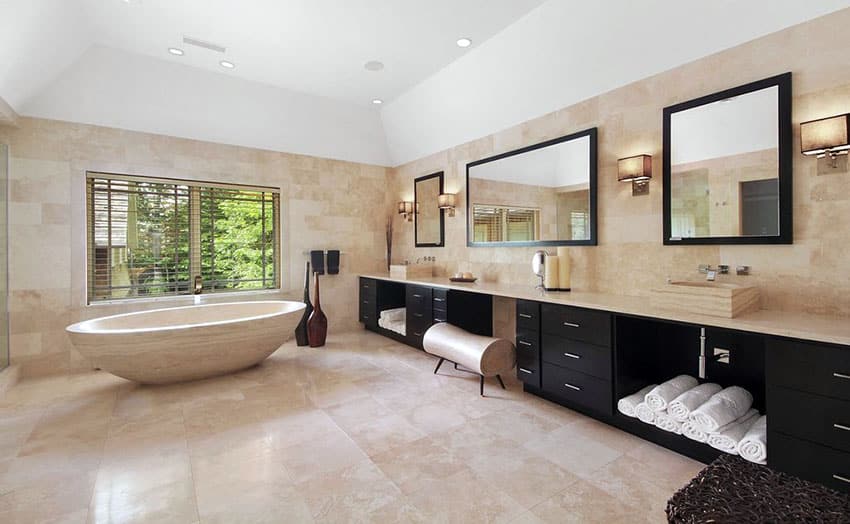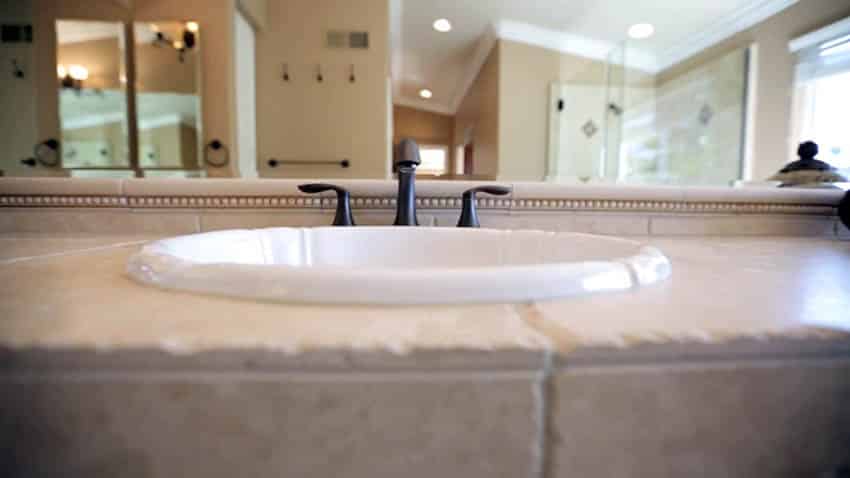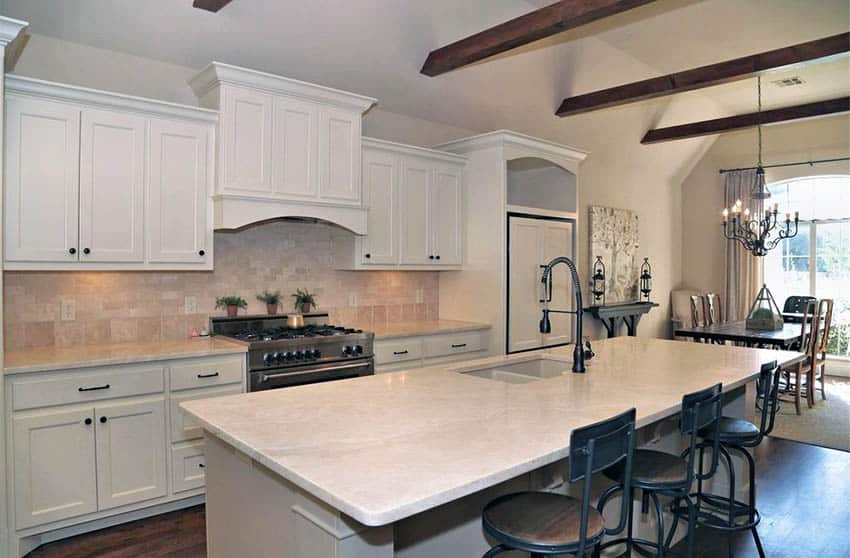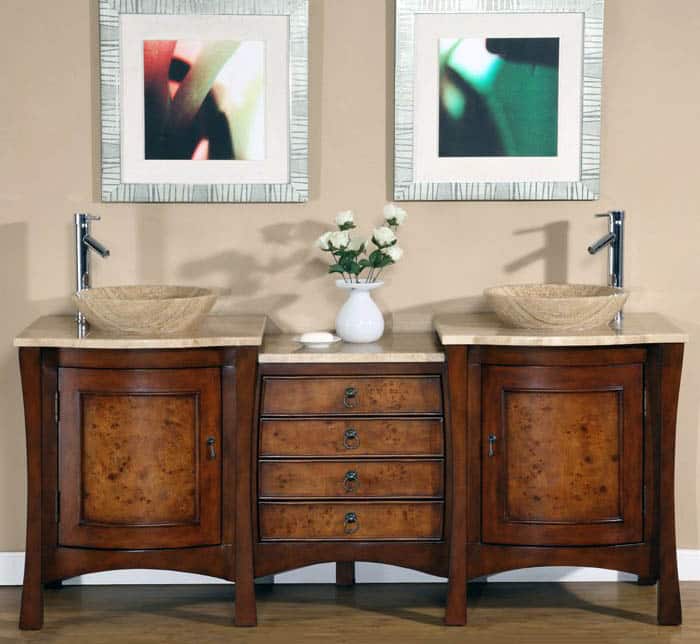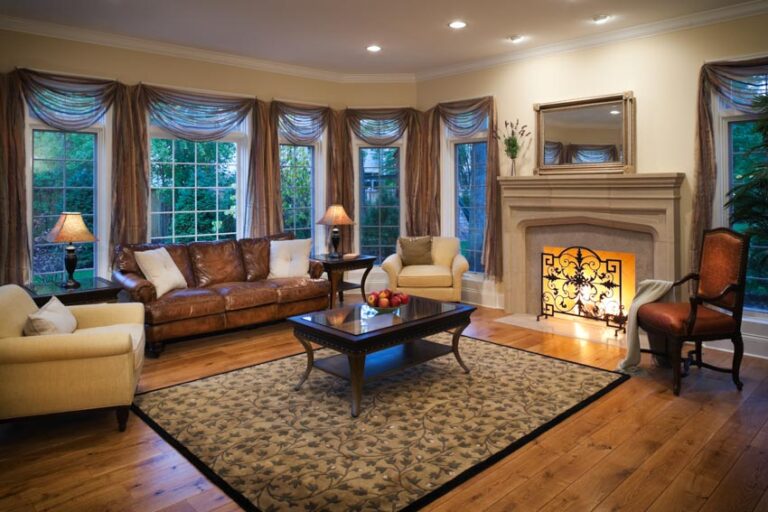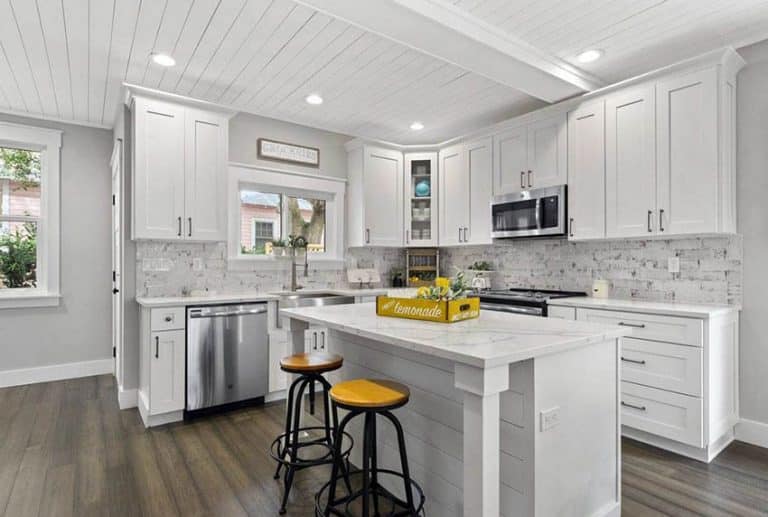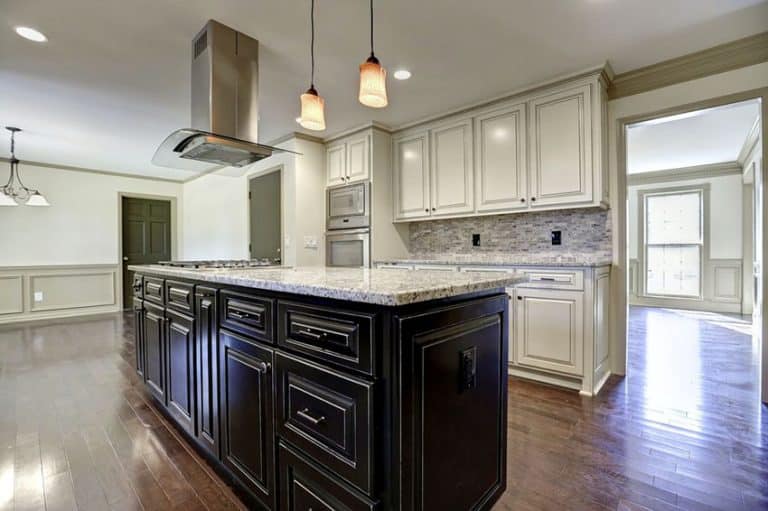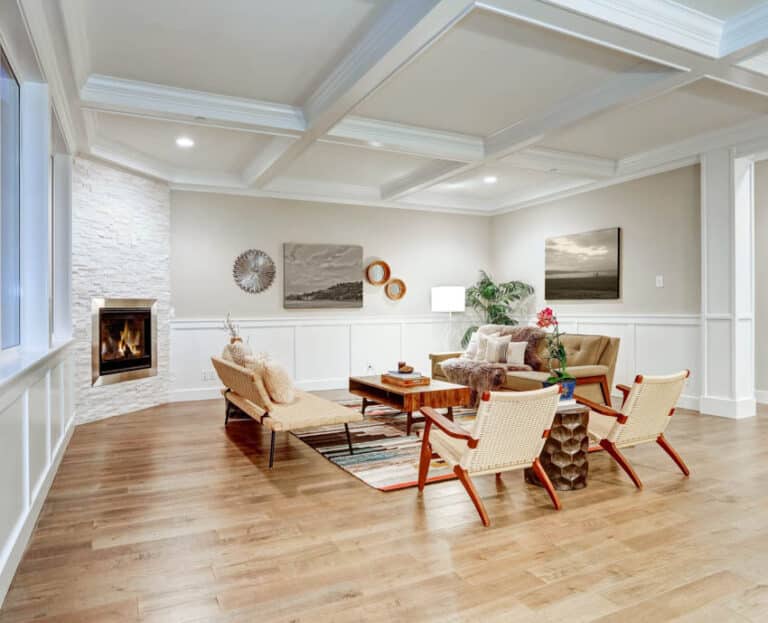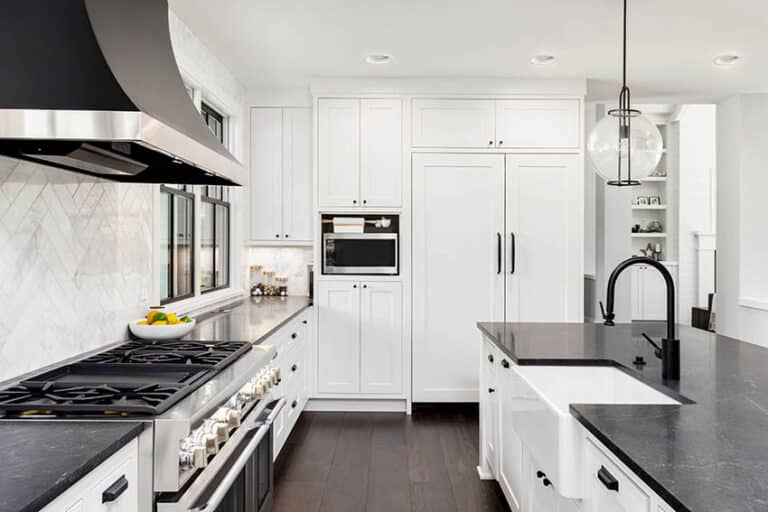Are Travertine Countertops Worth It? An Interior Designer’s Perspective
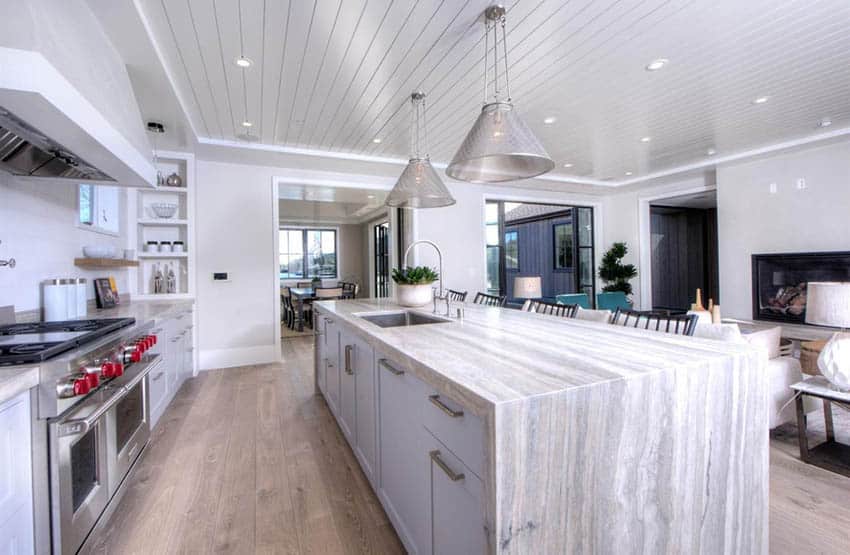
Travertine countertops can be used in many types of buildings, including both commercial and residential spaces. For interior design projects, these countertops have great aesthetic appeal with a wide variety of affordable shapes, colors, and patterns. With minimal maintenance, travertine counters look beautiful, are durable and cost-efficient.
Why Choose A Travertine Countertop?
Travertine Countertops are a sophisticated material that will bring a luxurious feel to any space, greatly resembling marble. Travertine was used to make historical Roman buildings such as the Colosseum, so it can really withstand the tests of time and wear. Nowadays, it is used extensively in bathroom and kitchen designs. Travertine bathroom showers are especially popular for Mediterranean-style homes.
Travertine is a type of limestone, meaning it is a sedimentary rock, typically very hard. It’s sometimes referred to as travertine-marble; however, it is classified as a type of limestone and is not actually a type of marble.
Travertine is sold in the form of tiles or a solid slab. For countertops, it is historically easier to buy it in the travertine slab form, and then there is the option of using tiles as a backsplash to pair with the countertop. This is to avoid any unneeded grout lines that can collect any dusts or bacteria.
Appearance
Travertine, in particular, will be found with variations of holes and hollows to create unique looks in every piece of stone. The color family tends to stay within the neutral beige and brown families.
The colors can include gold, slivers, and most shades of brown. Keeping the warm color palette makes for a natural, homey look when placed on counters.
Cuts
In addition to the variety of shades, travertine is available in they also can come in different cuts. These can be vein cut which will be done parallel with the natural veins of the stones.
In contrast, selecting a cross cut will cut the stone against the grain, creating a much different aesthetic.
Other types of travertine cuts include Fleuri, honed, and filled. The Fleuri cut combines vein and cross cuts often used in flooring or walls. Honed uses abrasives to achieve a matte finish. In comparison, filled cuts use cement resin to fill in the natural cavities in the stone to create a smoother surface.
Finishes
A Travertine countertop will have multiple different types of finishes that can change its appearance and feel of it whether honed, polished, tumbled, or chiseled it will be a beautiful finish.
- Honed finishes use fine abrasives to create a smooth, non-shiny finish.
- Polished finishes use fine abrasives one after the other, each becoming finer to achieve a high gloss decorative finish.
- Tumbled finishes use small pebbles as an abrasive and rotate the materials in a drum to get a textured character.
- Chiseled finishes use a chisel to take down the edges of the stone to create rough decorative design patterns.
Earlier, we mentioned that travertine has various holes and cavities that add to the uniqueness of the stone.
Finishing is the step where these holes will be filled with materials such as resin or grout. This will allow for a smooth surface for the finish to cover.
A honed finish will mean that the stone is ground into a smooth surface, any polish or shine will be removed, and it will give a matte appearance to the stone.
To get a tumbled finish, you will typically need a smaller stone versus an entire countertop, but it is done by putting the stone in a rubber coated barrel with grit and lubricants, and it rotated in the barrel. A polished finish will add a nice shiny look to the countertops if that is what you are looking for.
Travertine Tile Durability
Travertine is a very durable product that will not need to be replaced if taken care of. This material will last a good length of time longer than most other materials of its similarity.
Travertine was used for buildings still standing today, such as: The Roman Colosseum, The Toronto Natural Bridge, Hierapolis, the Burghausen Castle, The Getty Center, and even the lobby of the Willis Tower.
These buildings are still around today, showing travertine’s complete durability factor. This material is especially hard and durable compared to similar materials, such as marble.
Due to its high level of durability, it is one of the natural stones that are commonly used for outdoor areas such as courtyards, gardens, and other paved areas.
This material is especially used to make monuments and temples due to its being able to withstand the tests of time. Travertine will not crack easily, which is a good feature to have, and can add value to a home if that is where it is being placed.
This being said travertine is a material that contains holes and crevices that can become larger over time, potentially resembling cracks or chips, but it is just more ways that the stone is unique. To avoid that, sealing the flooring properly will be a top priority.
Another question though when it comes to durability is how it will hold up and what care will need to be taken to preserve it. Travertine is a porous material that will, unfortunately react negatively to acids. This means spills of orange juice or lime juice can be extremely detrimental.
This will also mean that a travertine slab or tiles cannot be cleaned with any acidic cleaning products. That being said, as long as any spills are wiped up quickly, and the counters are washed with soap and water, sealing twice a year will make sure the countertop’s beauty will last as well.
Travertine For Countertops Pros and Cons
Like any materials, travertine will have many pros and cons battling out, but in the end it will either be the materials you need or not. This material is often compared to marble but also contains some dissimilarities that can be the deciding factor between the two. Some of the pros and cons are below.
Pros
Beautiful looking surface – With many pros to selecting travertine counters, it is easy to understand why it is so commonly used. Travertine is a beautiful, rich, and elegant look that radiates warmth and luxury for bathroom floors and is often used for attractive stone kitchen surfaces.
Offers a unique look – These counters will give off a unique aesthetic with the varying veins and cavities that make each counter special and different from the next. On top of that, these counters come in a larger spectrum of colors, sizes, shapes, and patterns.
Can be found in both tiles & slabs – Travertine is available in both tiles and slabs, allowing for many different configurations and the product to become a matching backsplash to kitchen countertops.
Easy to cut & install – Travertine natural stone is easy to work with and is easier to cut into different shapes than materials such as porcelain. This will make it more versatile and easier to use in situations with unusual shapes and dimensions.
Cost-effective choice – Another pro is that it will be a cost-efficient selection compared to granite or marble.
That will mean you still get a beautiful piece without breaking the bank. In addition to beauty and cost efficiency, travertine is an eco-friendly material. This environmentally friendly natural product will bring your home a great natural look and feel.
Cons
Can be damaged by acids – With so many pros, there has to be a few downsides to a product. For one, unfortunately, travertine counters will react negatively with acids.
This means that even small drips or drops of things like orange juice, lime juice, or anything with natural acids, will cause staining to the counters. Travertine counters will be more for aesthetics versus functionality in many high-use locations that come in contact with acid-based materials.
Requires special sealants – If these are used in a highly functional space, then it will be recommended that special sealants and products are used to keep and maintain travertine slab and tile counters. These products will need to be alkaline based due to the stone being a naturally porous stone.
Is a porous material – This means that the stone will have different holes and pits, which is one of its beautifully unique qualities but will require polishing and sealing to be done periodically (about every 2 to 3 years) to keep the aesthetics of the stone.
Can be damaged by heat and scratching – Another downside is that it is sensitive to heat and scratches. Though polishing will help with the sensitivity, it will also make the scratches easier to see.
Travertine Cost
Depending on the type of travertine selected will have a great effect on the price. First, the price between the slab and the tile will be the biggest difference.
A travertine slab will be a large cut of the material, while tiles will be smaller, thinner pieces often laid next to each other to create a surface. Slab countertops will run about $25 to $50 per square foot.
Travertine Tile countertops, on the other hand, will range from $5 to $25 per square foot. It is important to keep in mind that these will be priced only for the materials themselves, things like shipping, installation, and sealing will be an extra price.
Though budgets may encourage this to become a do-it-yourself project, sometimes it is a good idea to shell out the extra bucks to get the professionals out to ensure the countertop is installed properly.
Based on the difficulty of the installation, will greatly affect your ability to do the project yourself or the price you will pay to get someone else to do it.
When sealing the travertine, after installing, you will need to keep in mind the price of grouts, sealants, and labor of natural stone professionals for applying the materials or the time you will devote to the task. Due to the porous nature of travertine natural stone, sealing is a necessity.
If budget is an important factor to the project (which almost always is the deciding factor), consider doing price research and getting quotes on multiple items from multiple places.
Each brand, color, style, pattern, finish, etc, will hit a different price point. It is also important to check the maintenance requirements for each type because that could cause additional future costs. Visit this page to see more popular types of kitchen countertops or here for craftsman style bathroom designs.

